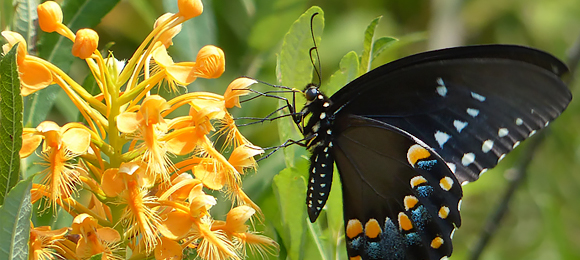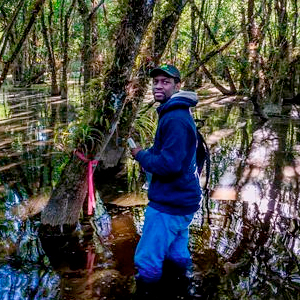
Photo by Rachel Goad
Orchids are the great beauties of the plant world, but their survival in the wild is threatened. The wide-open spaces that orchids and their pollinators need have been profoundly diminished throughout the United States. Chicago Botanic Garden’s scientists are working to understand the entire network of wild orchids: the plants themselves, their pollinators, the soils they thrive in, and the fungi they need to survive. You can help cultivate the power of plants to sustain and enrich life by giving to our Annual Fund.
Native Orchids
Are there wild orchids in Illinois?
Yes! There are 45 species native to Illinois. All are terrestrial orchids (rooted in the ground, like the perennials in your yard) that can withstand cold climates. They range in size from mere inches tall to more than 1-foot tall and inhabit the woodlands, patches of prairie, and undisturbed natural areas in every county in the state.
Are they rare?
In Illinois, 18 orchids are listed as threatened and endangered species. While exotic tropical orchids get lots of attention, lesser-known native orchids are struggling to survive.
How does the Chicago Botanic Garden help native orchids?
Our experts have studied the hawkmoth—the pollinator of the eastern and western prairie fringed orchids. We've published a demographic and pollination study, as just one more step toward understanding native orchids in Illinois and preserving the diversity of plants.
Studying the Elusive Ghost Orchid

Photo of Lynnaun Johnson by Larry W. Richardson
What is the ghost orchid, and why has the Garden studied it?
The ghost orchid (Dendrophylax lindenii) is a leafless orchid that clings to trees with pale, ghostly roots. It is endangered in Florida. Using the ghost orchid as a model, scientists are studying the survival strategies of these epiphytes, or orchids that grow on trees.
How do these orchids survive without soil?
The critical relationship between epiphytic orchids and fungi has been studied by Gregory Mueller, Ph.D., former chief scientist and Negaunee Vice President of Science, and former doctoral student Lynnaun Johnson. Johnson's data, collected in Florida, suggests that the ghost orchid depends on fungi in the bark of its host tree for nutrition and to help carry out essential functions.

